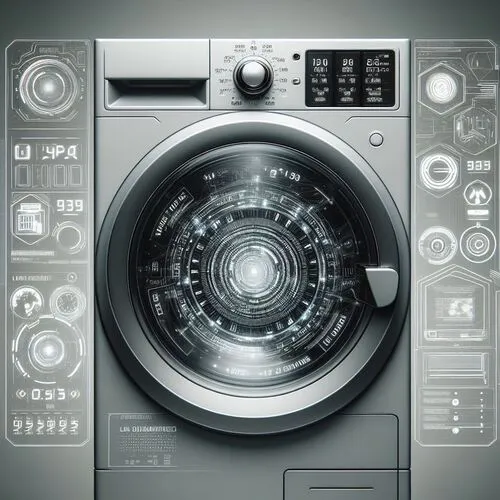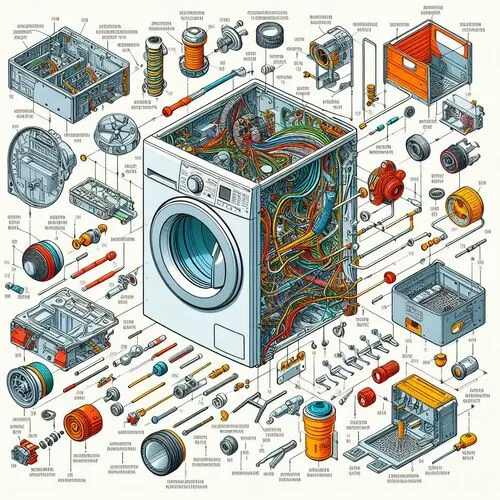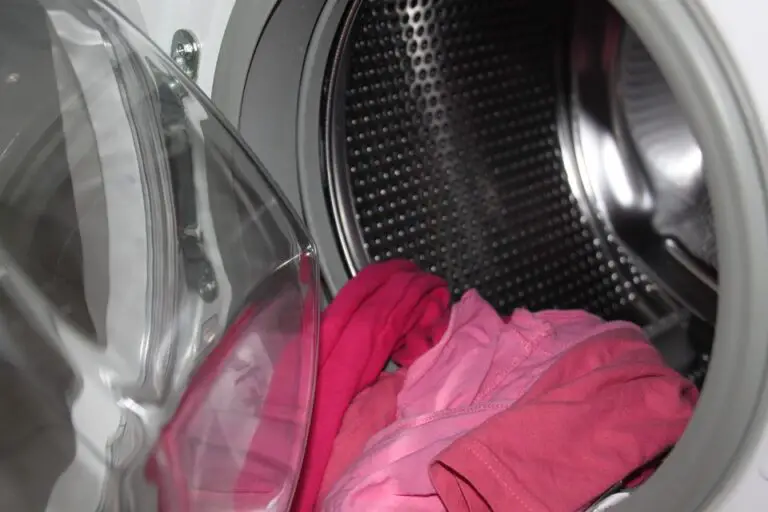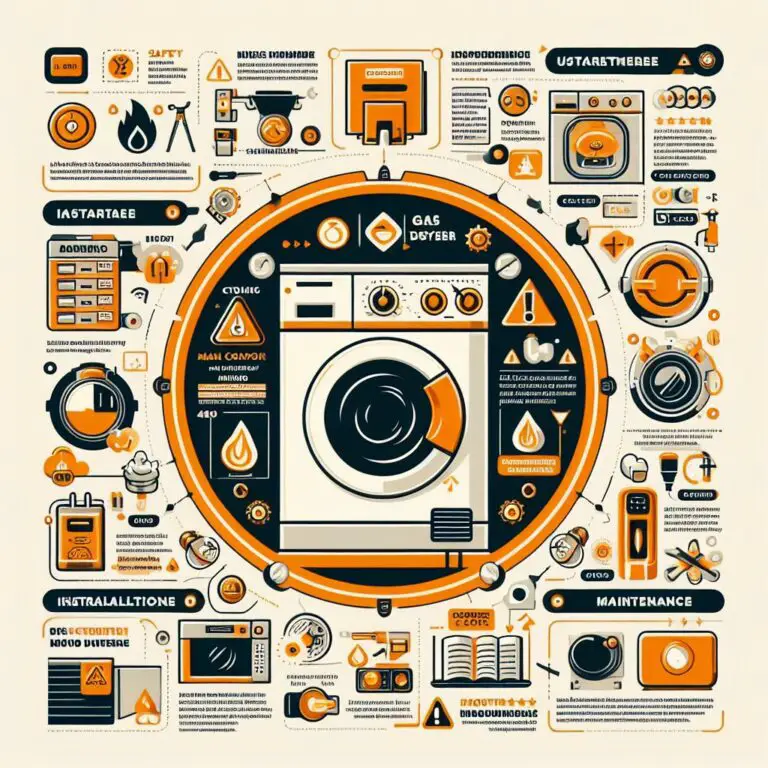Understanding Electric Dryer Wattage: A Comprehensive Guide
In the contemporary landscape of energy efficiency and environmental consciousness, understanding the intricacies of electric dryer wattage becomes a paramount consideration. Amid the myriad factors impacting appliance performance and energy consumption, grasping the nuances of wattage can yield substantial benefits, ranging from cost savings to sustainability.
In this comprehensive guide, we embark on an illuminating journey through the realm of electric dryer wattage, exploring its underlying significance, the multifaceted variables influencing it, and advanced strategies for optimizing energy consumption while ensuring optimal laundry outcomes.
What is Electric Dryer Wattage?
Electric dryer wattage represents the electric power consumption during the operation of an electric dryer, measured in watts. It indicates how quickly energy is utilized to produce heat and airflow for drying laundry. Understanding electric dryer wattage is crucial for managing energy consumption, optimizing efficiency, and making informed decisions about energy usage.
What is the Definition of Watts?

Watts is the unit of measurement for power in the International System of Units (SI). It represents the rate at which energy is used or transferred. One watt is defined as one joule of energy per second. In practical terms, watts quantify how fast an electrical device consumes or produces energy. It’s a fundamental measure of the intensity of electrical power and is widely used to describe the energy usage of various appliances and systems.
What is Watts formula?
The formula to calculate watts is:
Watts (W) = Volts (V) × Amperes (A)
This formula represents the relationship between voltage (V) and current (A), which together determine the power consumption or generation in a circuit. By multiplying the voltage and current, you can find the power in watts. This formula is fundamental in understanding the power usage of electrical devices and systems.
What Does Electric Dryer Wattage Signify?
The significance of electric dryer wattage extends to both cost and performance. It serves as a key indicator of the energy consumption rate during the drying process. Higher wattage implies more intense heat and airflow, leading to faster drying times. However, this also translates to higher energy usage and increased utility expenses.
Understanding the relationship between electric dryer amps and wattage is essential for ensuring that the electrical circuitry in your home can handle the load. It helps prevent overloading circuits and ensures safe and efficient dryer operation. When considering purchasing or using an electric dryer, it’s important to factor in both its wattage and the corresponding amperage to ensure compatibility with your home’s electrical infrastructure.
Why is it Important to Grasp the Concept of Wattage for Electric Dryers?
Comprehending electric dryer wattage holds immense importance for several reasons:
- Energy Efficiency: Grasping wattage empowers users to make energy-efficient choices. Opting for lower wattage dryers minimizes energy use, decreases costs, and contributes to environmental sustainability.
- Cost Consideration: Dryers with higher wattage result in greater long-term operational expenses due to increased energy consumption. Understanding this helps in making budget-conscious decisions.
- Environmental Impact: With growing eco-consciousness, knowledge of wattage facilitates environmentally responsible decisions aligned with conservation goals.
- Optimal Drying: Understanding how wattage influences drying time and efficiency enables users to achieve optimal results without excessive energy consumption.
How Does Wattage Impact Drying Time and Efficiency?
The influence of wattage on drying time and efficiency is noteworthy:
- Drying Time: High-wattage dryers generate intense heat and airflow, leading to quicker drying. This is advantageous for large loads or thick fabrics.
- Energy Efficiency: While high wattage accelerates drying, it also increases energy consumption. Conversely, low-wattage dryers may take longer but are more energy-efficient.
- Balancing Act: Striking a balance between drying time and energy efficiency is crucial. Opting for moderate wattage might slightly prolong drying time but substantially reduce energy use.
- Load Size Impact: Electric dryer wattage affects different load sizes differently. High-wattage dryers may be excessive for small loads, whereas they’re beneficial for larger loads.
In essence, understanding how wattage shapes drying time and efficiency empowers tailored dryer use, considering individual preferences, laundry size, and energy-saving goals.
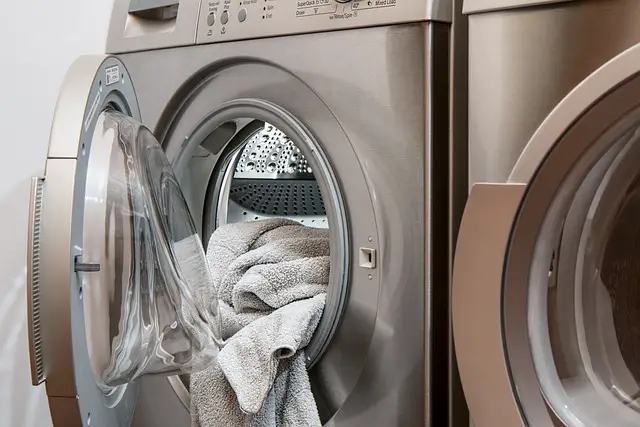
How Many Watts Does an Electric Dryer Use?
The wattage consumption of an electric dryer can vary based on factors like the type of dryer, load size, and heat settings. On average, electric dryers typically use around 1,800 to 5,000 watts during their operation.
Variability Across Dryer Types: Understand that wattage usage varies based on dryer type. Vented dryers, emblematic of conventional designs, often consume 4,000 to 6,000 watts. In contrast, ventless dryers, with their innovative moisture extraction mechanisms, tend to hover around 1,000 to 2,000 watts. Heat pump dryers, lauded for their energy efficiency, encompass a range of 1,000 to 4,000 watts.
How Many Watts Does a 240V Electric Dryer Use?
A 240V electric dryer usually consumes around 4,800 to 5,600 watts, considering its higher voltage supply for more efficient operation.
How Many Watts Does a 220V Electric Dryer Use?
Similar to 240V dryers, a 220V electric dryer also typically utilizes around 4,800 to 5,600 watts due to its higher voltage supply.
How Many Watts Does a 110V / 120V Electric Dryer Use?
Electric dryers that operate at 110V or 120V usually consume about 1,800 to 5,000 watts. The lower voltage requires slightly more energy to achieve drying efficiency.
What Are the Factors Influencing Electric Dryer Wattage?
The complexity of electric dryer wattage is inextricably intertwined with an array of dynamic factors that collectively shape its consumption patterns. Embarking on an exploration of these factors unveils the nuanced intricacies of energy efficiency within the context of electric dryers.
How Does Dryer Type and Design Impact Wattage?
The multifaceted world of electric dryers spans various types and designs, each intrinsically impacting wattage consumption. From the traditional vented dryers to the innovative ventless and heat pump counterparts, the structural variations underpin distinct energy efficiency profiles.
Vented Dryers
Anchored in simplicity, vented dryers expel moisture-laden air through external vents. While vented electric dryer straightforward, this design translates to higher energy consumption due to continuous heat expulsion.
Ventless Dryers
Ventless dryers, epitomizing innovation, operate at lower wattages. By circumventing the need for external vents, Ventless Electric Dryers leverage advanced moisture extraction mechanisms to achieve efficient drying while minimizing energy usage.
Heat Pump Dryers
Representing the pinnacle of energy-efficient technology, heat pump dryers epitomize a paradigm shift. These appliances harness a heat exchanger system that recycles warm air, leading to significantly reduced wattage consumption without compromising performance.
Why Do Load Size and Moisture Content Matter?

An intricate dance between load size and moisture content dictates the energy requirements of electric dryers, with profound implications for efficiency.
Load Size’s Influence
The volume of laundry within the drum profoundly affects wattage consumption. Optimal load distribution enables unhindered airflow, translating to efficient drying and minimized energy demands.
Moisture Content’s Role
The degree of moisture within the fabrics is a decisive factor. Wetter clothes necessitate more energy to evaporate the excess moisture, directly influencing overall energy consumption.
Intricately aligning load size and moisture content optimization with energy-efficient practices empowers individuals to tailor drying cycles for maximal efficiency while prolonging garment life.
What’s the Deal with Heat Settings and Special Features?
The duality of heat settings and supplemental features wields a significant influence over electric dryer wattage, necessitating strategic decision-making for enhanced energy conservation.
Deconstructing Heat Settings
Heat settings encompass the trinity of low, medium, and high, each linked to distinct wattage outputs. The calibrated balance between energy consumption and drying speed hinges on judicious selection.
- Low Heat: Designed for delicate fabrics, this setting preserves energy at the expense of extended drying times.
- Medium Heat: A synthesis of energy efficiency and performance, it finds utility in everyday loads.
- High Heat: Reserved for heavy fabrics and substantial loads, high heat expedites drying at the cost of increased wattage consumption.
Harnessing Special Features
Contemporary electric dryers often feature supplementary functionalities such as steam cycles and sanitization options. While these augment convenience, they can elevate energy usage due to heightened heat demands.
Striking an equilibrium between heat settings and feature utilization empowers users to harmonize energy efficiency with laundry preferences.
How Can You Read the Dryer’s Energy Label to Make Informed Decisions?
Demystifying the EnergyGuide Label
Navigating the landscape of energy efficiency extends beyond mere intuition—it demands the utilization of informative tools. Enter the EnergyGuide label—a roadmap to deciphering the energy consumption terrain of electric dryers. This label, akin to an oracle, imparts valuable insights crucial for making informed decisions.
Deciphering Energy Consumption Metrics
Embracing the EnergyGuide label bestows the wisdom of vital statistics, including the estimated annual operating cost and the kilowatt-hour (kWh) usage. These metrics cast light on the annual energy consumption, enabling individuals to gauge the financial implications of their purchase while fostering a heightened awareness of energy conservation.
By engaging in a meticulous comparison of these metrics across various dryer models, one embarks on a journey of comparative analysis, enabling the selection of appliances that marry performance with energy frugality.
Holistic Model Comparison
Beyond the solitary realm of wattage contemplation lies the holistic realm of model comparison. Here, the EnergyGuide label emerges as a guiding star, illuminating the path towards energy-conscious choices. By harmonizing the estimated yearly operating cost with the kilowatt-hour usage, prospective buyers gain a panoramic view of the financial and environmental facets of their prospective acquisitions.
In this realm of model comparison, the EnergyGuide label isn’t just a numerical enigma—it’s a compass that directs the discerning consumer towards appliances that are aligned with energy-saving aspirations.
What Are Practical Tips for Optimizing Electric Dryer Energy Consumption?
Embracing Regular Maintenance
Just as self-care bolsters human well-being, regular maintenance breathes vitality into electric dryers, catalyzing energy efficiency.
Maintaining Lint Filter and Dryer Vent: The intricate choreography of airflow in electric dryers hinges upon clean conduits. A clogged lint filter obstructs the fluidity of air movement, inducing the appliance to exert more energy. Similarly, blocked dryer vents hamper efficient ventilation, resulting in extended drying times and heightened energy consumption.
Elevating Efficiency through Maintenance: Regularly cleansing the lint filter before each cycle ensures unimpeded airflow, amplifying drying efficiency. Moreover, the prudent practice of periodic professional vent cleaning obviates lint accumulation, ensuring optimal performance and minimal energy wastage.
Mastering Load Management
Understanding the art of load management is tantamount to wielding a key to energy efficiency.
Balancing Loads for Optimal Drying: An even distribution of items within the drum facilitates uninhibited airflow, culminating in expeditious drying cycles. Unbalanced loads, conversely, obstruct air circulation, prolonging drying times and heightening energy utilization.
Guarding Against Overloading: Overloading a dryer not only compromises efficiency but also escalates energy consumption. Cultivating an understanding of optimal load sizes ensures that the appliance operates at its intended capacity without excess energy expenditure.
Strategizing Heat Settings for Efficiency: The symphony of energy efficiency harmonizes with the precise orchestration of heat settings.
Tailoring Heat Settings to Fabric Needs: The temperature at which clothes are dried directly correlates with energy consumption. Delicate fabrics thrive under low heat settings, preserving both energy and fabric integrity.
Customizing Heat Choices per Load: Contextualizing heat settings to match load size and fabric type maximizes efficiency. Experimenting with medium heat for most loads bridges energy conservation with performance.
Unlocking Sensor Drying’s Potential: Delineating the disparity between timed drying and sensor drying illuminates a trajectory towards energy savings.
Decoding Timed Drying vs. Sensor Drying: Timed drying operates on predetermined intervals, whereas sensor drying employs moisture sensors to gauge dryness levels. The latter averts energy waste by curbing over-drying.
Championing Energy Efficiency through Sensor Drying: Prioritizing sensor drying when available optimizes energy consumption, culminating in more resourceful appliance operation.
How Does Electric Dryer Wattage Compare to Other Household Appliances?
Contextualizing Electric Dryer Wattage: In the grand tapestry of household energy consumption, comprehending electric dryer wattage within the broader context offers an enlightening perspective.
Holistic Energy Allocation: Ponder the frequency of dryer use relative to other energy-hungry household stalwarts—refrigerators, air conditioners, and ovens. While electric dryers might possess higher wattage during operation, their occasional usage might pale in comparison to the energy demands of other consistent appliances.
Strategizing Energy Distribution: Realizing the relative contribution of electric dryer wattage vis-à-vis other devices empowers intentional energy allocation. This panoramic outlook aids in devising strategies that trim consumption where it counts most, preserving a harmonious equilibrium.
What Are the Latest Energy-Saving Innovations in Dryer Technology?
Innovations Shaping Dryer Landscape: The dynamic realm of dryer technology continually evolves, unearthing innovative solutions to augment energy efficiency.
The Rise of Heat Pump Dryers: Amid this landscape, heat pump dryers stand as beacons of energy conservation. These marvels employ a revolutionary heat exchanger system that recycles warm air, culminating in remarkable reductions in wattage consumption.
Advantages of Heat Pump Dryers:
- Elevated Energy Efficiency: Heat pump dryers claim up to 50% less energy compared to traditional vented counterparts.
- Nurturing Fabric Care: Lower drying temperatures engender fabric longevity, extending the lifespan of your garments.
- Eco-Conscious Stance: Decreased energy consumption translates to a diminished carbon footprint, presenting a compelling case for sustainable living.
Nurturing Energy-Saving Innovation: It’s imperative to acknowledge that while heat pump dryers command higher upfront costs, the long-term energy savings and ecological rewards make them a tantalizing proposition for those committed to energy mindfulness.
FAQ Electric Dryer Wattage
How many watts does a 240V dryer use?
240V dryer typically uses around 4,800 to 5,600 watts, as the higher voltage enables more efficient operation and faster drying times.
Do electric dryers use a lot of electricity?
Yes, electric dryers can consume a substantial amount of electricity due to their heating and airflow mechanisms. Energy-efficient models and proper usage practices can help mitigate consumption.
How many watts is a typical electric clothes dryer?
A typical electric clothes dryer usually utilizes around 1,800 to 5,000 watts, with variations based on factors like load size, heat settings, and technological features.
How many amps does a 240V dryer use?
The amperage of a 240V dryer depends on its wattage. Using the formula: Current (Amps) = Power (Watts) / Voltage (Volts), a 240V dryer with, for instance, 5,000 watts would draw approximately 20.83 amps.
How many watts does a Samsung dryer use?
The wattage of a Samsung dryer can vary by model and features. On average, Samsung electric dryers typically consume around 1,800 to 5,000 watts.
What size breaker do I need for a 240V dryer?
A 240V dryer usually requires a double-pole circuit breaker with a capacity of 30 to 50 amps. Check what size breaker for electric dryer or consult the dryer’s manual or an electrician for precise specifications.
Can an electric dryer run on 120 volts?
Electric dryers typically require higher voltage, such as 240V, to operate efficiently due to their heating elements. Running them on 120V would result in reduced performance and longer drying times.
Conclusion
Comprehending electric dryer wattage empowers energy-conscious decisions. Balancing drying time and efficiency, understanding cost implications, and considering environmental impact are all pivotal. By aligning these factors, you can optimize your drying process while minimizing energy consumption and costs.

